- 1Department of Physics and Astronomy, Howard University, Washington, DC, United States
- 2School of Physics and Astronomy, The University of Minnesota, Minneapolis, MN, United States
- 3Department of Physics, Indiana University of Pennsylvania, Indiana, PA, United States
- 4Division of Materials Science and Engineering, Ames Laboratory, Ames, IA, United States
We present a series of temperature and field-dependent magnetization studies of large single-crystal spin glass samples, focusing on both field-cooled (FC) and zero-field-cooled (ZFC) magnetization studies, as well as ac susceptibility measurements. Using the above experimental techniques we aim to understand the nature of spin glass transition in presence of a field, a key factor in understanding the properties of these systems. Building on previous studies that have explored magnetic signatures indicative of spin glass transitions, our research employs a systematic approach to refine the identification of this transition temperature. Through static and dynamic measurements, we aim to shed light on the open issues regarding the key markers of spin glass transitions, enhancing our understanding of these complex systems.
1 Introduction
Over the years experimentalists have used a series of techniques to “determine” the spin glass phase transition temperature
AC and DC magnetic susceptibility measurements under varying conditions are important for understanding the properties of spin glasses. Early seminal work by Cannella and Mydosh [1] highlighted the critical importance of ac susceptibility studies in exploring the magnetic properties of gold-iron alloys, particularly noting the presence of a susceptibility cusp indicative of a possible phase transition in this system. With further exploration, it was found that this characteristic curve exhibited a time-dependent behavior, adding a dynamic complexity to the magnetic response of such materials [2]. Moreover, the “static” magnetization measurements, specifically field-cooled (FC) and zero-field-cooled (ZFC) magnetization studies, have been important in characterizing spin glass behavior. These methods, discussed extensively by Kenning et al. [3, 4], serve as fundamental techniques to determine the onset of spin glass ordering. The FC and ZFC magnetization measurements were first performed by T. Mizoguchi et al. [5] and later adopted by other researchers working on other spin glasses, such as Cu:Mn [6] and Au:Fe [7, 8]. Subtracting the ZFC magnetization from the FC magnetization shows the onset of irreversible behavior. This is an indication of non-equilibrium state of the spin glass phase. The bifurcation temperature of the FC and ZFC magnetization curves is magnetic field dependent, and pinpoints the temperature at which the magnetic irreversibility begins. In this manuscript, we’ll call this temperature
Lévy [9] found, in a Ag:Mn spin glass, that at low frequencies (
Experimentally, both ac and “static” or dc measurement techniques (i.e., FC and ZFC magnetizations), have been used as a rough estimate of the transition temperature. Kenning et al. [11], working on a poly-crystalline
In this paper, we conduct a systematic examination of these techniques. We’ll evaluate the relationship of these transition temperatures with each other, and their relationship to the critical transition temperature
One issue with comparing metallic spin glasses is that the transition temperature is strongly sensitive to the concentration of the magnetic constituent. For example, Vier et al. found that in Cu:Mn the transition temperature (determined by the peak in the DC FC-magnetization) increases by 4–5 K for every % increase in Mn [13]. Therefore comparisons are difficult unless one is working on the same sample. In this study, we are comparing the results of different techniques used to measure the glass transition temperature. If all of these techniques actually define the glass transition temperature then we might expect that all of these measurements would imply the same transition temperatures and this transition temperature would have similar properties as a function of magnetic field. In this study, we chose a Cu:Mn (6%) single crystal sample for our measurements. Cu:Mn is the most studied spin glass and often termed the canonical spin glass. We expect the results found in this paper to not only extend to other concentrations of Cu:Mn but also to hold for other metallic spin glasses such as Ag:Mn and Au:Fe. While further experiments will test this hypothesis, this comparison is a starting point for analysis.
2 Experimental methods
All samples used in this study are cut from a single crystal
3 Results
Figure 1 shows FC and ZFC magnetization curves of
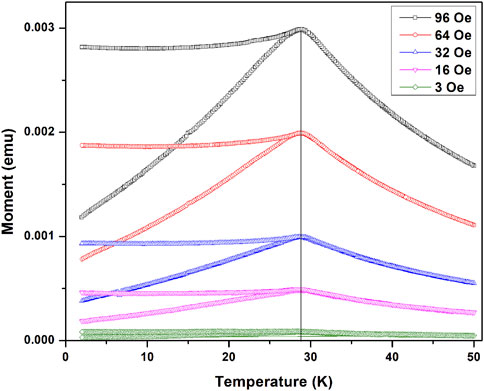
Figure 1. Temperature dependent FC and ZFC magnetization curves of a single crystal
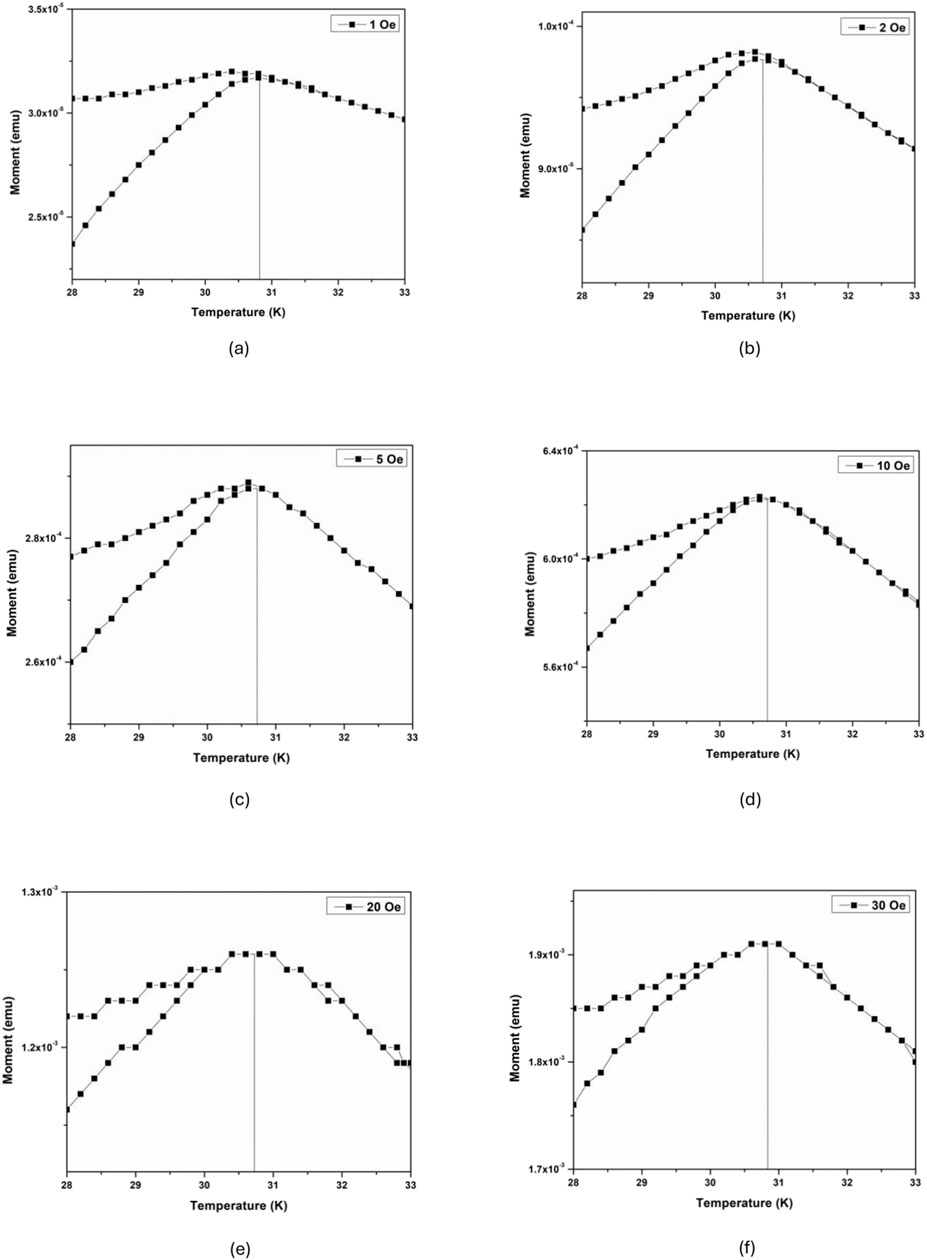
Figure 2. Field-cooled and zero-field-cooled magnetization plots vs. temperature for different fields: (A) 1, (B) 2, (C) 5, (D) 10, (E) 20, and (F) 30 Oe. This data indicate that the ZFC magnetization peak temperature does not shift with applied magnetic field, but the irreversibility onset temperature lowers with increasing field. The data was taken using a MPMS-5S SQUID Magnetometer at the University of Minnesota.
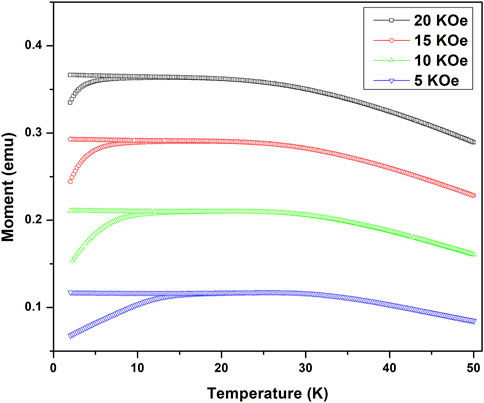
Figure 3. The field-cooled (FC) and zero-field-cooled (ZFC) curves as a function of temperature for higher fields (5, 10, 15, and 20 kOe). These measurements were performed at Howard University.
The difference between field-cooled magnetization and zero-field-cooled magnetization defines the irreversible magnetization
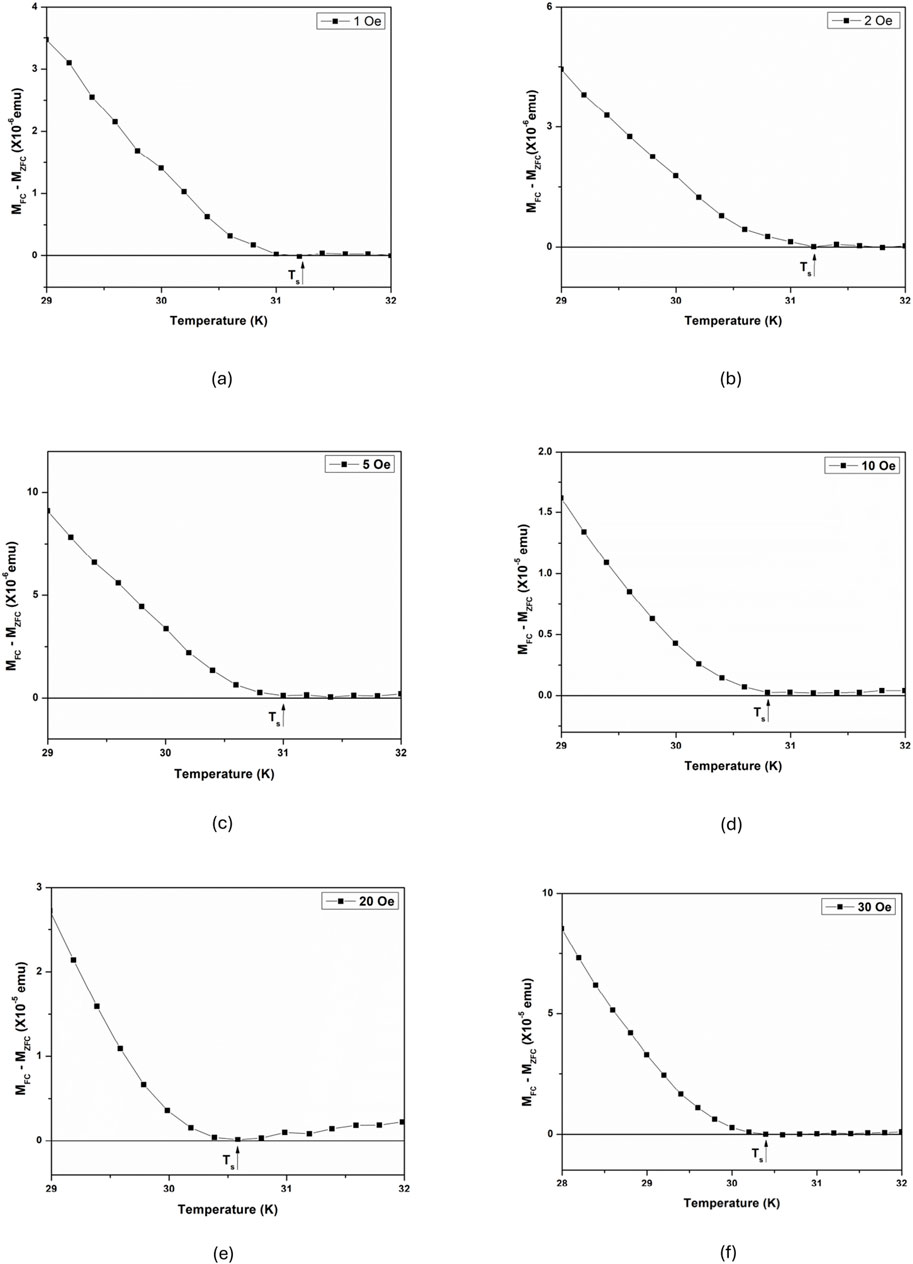
Figure 4. Plot of
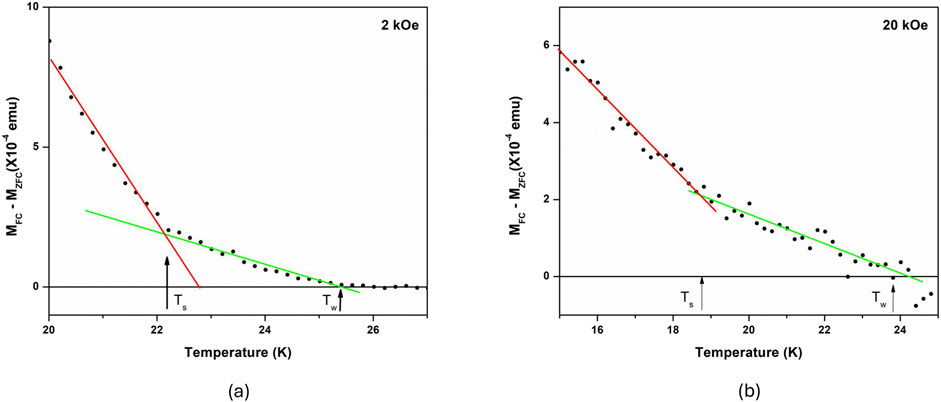
Figure 5. (A) A plot of
Figure 5 shows the same study for high magnetic fields (
The temperature and field-dependent ac magnetic susceptibility
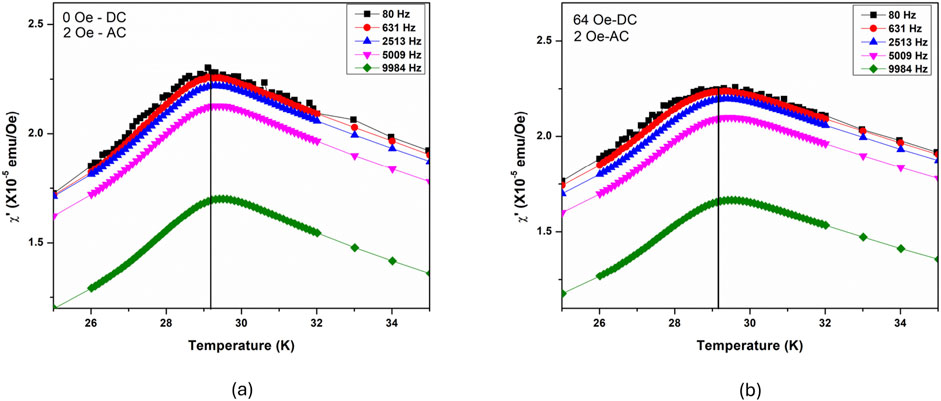
Figure 6. Real part of susceptibility
To further explore the spin glass behavior of the Cu0.94Mn0.06 sample, ac magnetic susceptibility measurements were made in a constant magnetic field, with magnetic fields ranging from 0 to 64 Oe. Figure 7 shows the corresponding plots obtained from these experiments. Remarkably, despite the variation in static magnetic field strength, the peak of the susceptibility curve remains unchanged. Extrapolating the time dependence of the ac susceptibility, we find that the peak temperature of the ac susceptibility crosses the peak temperature of both the FC and ZFC peaks between 0.16 and 1 Hz (shaded region in Figure 7). This is very near the frequency region where Lévy [9] observe that the ac susceptibility peak no longer shifts (or shifts much more slowly) as a function of decreasing frequency. This observation aligns with the behavior observed in the ZFC and FC magnetization, where the peak position remains constant irrespective of the applied magnetic field (for low fields).
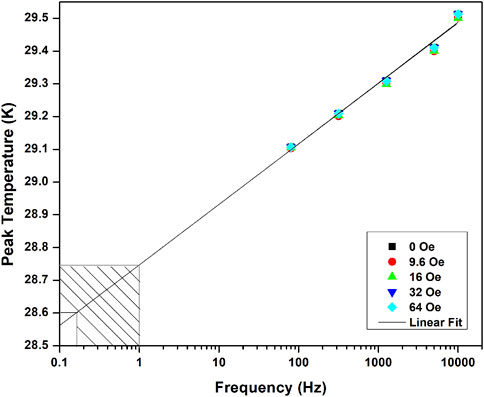
Figure 7. Peak temperature of ac susceptibility
Figure 8 is a plot of the magnetic field
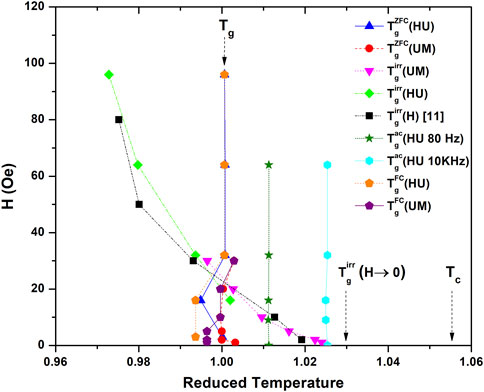
Figure 8. A comparison of different datasets plotted against the reduced temperature.
4 Discussion
The comparison of different techniques for determining
The question remains, “Is the
First, in low magnetic fields, the onset of irreversibility (the difference between the FC and ZFC magnetizations) begins at a temperature above
A second issue with the above definition of
Finally, on the same samples, Ref. [4] observes a continuous decrease in the timescale
5 Summary
In summary, we conducted a thorough investigation involving static measurements, (FC and ZFC) magnetization measurements, and dynamic measurements, (ac susceptibility) on a single crystal
Data availability statement
The raw data supporting the conclusions of this article will be made available by the authors, without undue reservation.
Author contributions
SP: Data curation, Formal Analysis, Investigation, Methodology, Writing–original draft, Writing–review and editing. DH: Methodology, Writing–review and editing. GK: Funding acquisition, Investigation, Methodology, Project administration, Supervision, Writing–review and editing, Conceptualization, Writing–original draft. DS: Methodology, Writing–review and editing. SG: Conceptualization, Funding acquisition, Investigation, Supervision, Writing–review and editing, Writing–original draft.
Funding
The author(s) declare that financial support was received for the research, authorship, and/or publication of this article. This work is supported by the NSF Award No. DMR-2018579. This work was supported in part by the U.S. Department of Energy, Office of Science, Office of Basic Energy Sciences, Division of Materials Science and Engineering, under Award No. DE-SC0013599. Part of the research was performed at the Ames National Laboratory, which is operated for the U.S. DOE by Iowa State University under Contract No. DE-AC02-07CH11358. Part of this work was performed at the Institute for Rock Magnetism (IRM) at the University of Minnesota. The IRM is a US National Multi-user Facility supported through the Instrumentation and Facilities program of the National Science Foundation, Earth Sciences Division, award NSF-EAR 2153786, and by funding from the University of Minnesota.
Acknowledgments
We sincerely thank Raymond L. Orbach and E. Dan Dahlberg for their insightful conversations, which greatly contributed to this work.
Conflict of interest
The authors declare that the research was conducted in the absence of any commercial or financial relationships that could be construed as a potential conflict of interest.
Publisher’s note
All claims expressed in this article are solely those of the authors and do not necessarily represent those of their affiliated organizations, or those of the publisher, the editors and the reviewers. Any product that may be evaluated in this article, or claim that may be made by its manufacturer, is not guaranteed or endorsed by the publisher.
References
1. Cannella V, Mydosh JA. Magnetic ordering in gold-iron alloys. Phys Rev B (1972) 6:4220–37. doi:10.1103/physrevb.6.4220
2. Mulder C, Van Duyneveldt A, Mydosh J. Susceptibility of the cu mn spin-glass: frequency and field dependences. Phys Rev B (1981) 23:1384–96. doi:10.1103/physrevb.23.1384
3. Kenning G, Chu D, Alavi B, Hammann J, Orbach R. Magnetic-field dependence of tg in bulk cu: Mn and cu: Mn/cu multilayer systems. J Appl Phys (1991) 69:5240–2. doi:10.1063/1.348091
4. Kenning GG, Brandt M, Brake R, Hepler M, Tennant D. Observation of critical scaling in spin glasses below tc using thermoremanent magnetization. Front Phys (2024) 12:1443298. doi:10.3389/fphy.2024.1443298
5. Mizoguchi T, McGuire T, Kirkpatrick S, Gambino R. Measurement of the spin-glass order parameter in amorphous gd0.37al0.63. Phys Rev Lett (1977) 38:89–92. doi:10.1103/physrevlett.38.89
6. Nagata S, Keesom P, Harrison H. Low-dc-field susceptibility of cu mn spin glass. Phys Rev B (1979) 19:1633–8. doi:10.1103/physrevb.19.1633
7. Kinzel W. Remanent magnetization in spin-glasses. Phys Rev B (1979) 19:4595–607. doi:10.1103/physrevb.19.4595
8. Senoussi S, Elkhatouri D. Field and temperature behaviour of the zero field cooled and the field cooled magnetization of au22fe18. J Magnetism Magn Mater (1986) 54:153–4. doi:10.1016/0304-8853(86)90528-7
9. Lévy LP. Critical dynamics of metallic spin glasses. Phys Rev B (1988) 38:4963–73. doi:10.1103/physrevb.38.4963
10. Levy LP, Ogielski AT. Nonlinear dynamic susceptibilities at the spin-glass transition of ag: Mn. Phys Rev Lett (1986) 57:3288–91. doi:10.1103/physrevlett.57.3288
11. Kenning G, Chu D, Orbach R. Irreversibility crossover in a cu: Mn spin glass in high magnetic fields: evidence for the gabay-toulouse transition. Phys Rev Lett (1991) 66:2923–6. doi:10.1103/physrevlett.66.2923
12. Sandlund L, Granberg P, Lundgren L, Nordblad P, Svedlindh P, Cowen J, et al. Dynamics of cu-mn spin-glass films. Phys Rev B (1989) 40:869–72. doi:10.1103/physrevb.40.869
13. Vier D, Schultz S. Evidence for multiple mechanisms contributing to the transition temperature in metallic spin-glasses. Phys Rev Lett (1985) 54:150–3. doi:10.1103/physrevlett.54.150
14. Guchhait S, Kenning GG, Orbach RL, Rodriguez GF. Spin glass dynamics at the mesoscale. Phys Rev B (2015) 91:014434. doi:10.1103/physrevb.91.014434
15. Zhai Q, Harrison DC, Tennant D, Dahlberg ED, Kenning GG, Orbach RL. Glassy dynamics in cumn thin-film multilayers. Phys Rev B (2017) 95:054304. doi:10.1103/physrevb.95.054304
16. Kenning GG, Tennant DM, Rost CM, da Silva FG, Walters BJ, Zhai Q, et al. End of aging as a probe of finite-size effects near the spin-glass transition temperature. Phys Rev B (2018) 98:104436. doi:10.1103/physrevb.98.104436
17. Zhai Q, Martin-Mayor V, Schlagel DL, Kenning GG, Orbach RL. Slowing down of spin glass correlation length growth: simulations meet experiments. Phys Rev B (2019) 100:094202. doi:10.1103/physrevb.100.094202
18. de Almeida JR, Thouless DJ. Stability of the sherrington-kirkpatrick solution of a spin glass model. J Phys A: Math Gen (1978) 11:983–90. doi:10.1088/0305-4470/11/5/028
19. Kotliar G, Sompolinsky H. Phase transition in a dzyaloshinsky-moriya spin-glass. Phys Rev Lett (1984) 53:1751–4. doi:10.1103/physrevlett.53.1751
20. Gabay M, Toulouse G. Coexistence of spin-glass and ferromagnetic orderings. Phys Rev Lett (1981) 47:201–4. doi:10.1103/physrevlett.47.201
21. Cragg DM, Sherrington D, Gabay M. Instabilities of an m-vector spin-glass in a field. Phys Rev Lett (1982) 49:158–61. doi:10.1103/physrevlett.49.158
22. Petit DCI, Fruchter L, Campbell IA. Ordering in heisenberg spin glasses. Phys Rev Lett (2002) 88:207206. doi:10.1103/physrevlett.88.207206
23. Vincent E. Spin glass experiments. In: T Chakraborty, editor. Encyclopedia of condensed matter physics. 2nd edn. Oxford: Academic Press (2024). p. 371–87.
Keywords: disorder magnetic systems, complex systems, spin glass transition, glass transition temperature, field-cooled magnetization, zero-field-cooled magnetization, AC susceptibility
Citation: Pradhan S, Harrison D, Kenning G, Schlagel DL and Guchhait S (2024) Investigation of experimental signatures of spin glass transition temperature. Front. Phys. 12:1482907. doi: 10.3389/fphy.2024.1482907
Received: 19 August 2024; Accepted: 30 October 2024;
Published: 13 December 2024.
Edited by:
Stefan Boettcher, Emory University, United StatesReviewed by:
Clodoaldo Irineu Levartoski de Araujo, Universidade Federal de Viçosa, BrazilDaniel Barci, Rio de Janeiro State University, Brazil
Copyright © 2024 Pradhan, Harrison, Kenning, Schlagel and Guchhait. This is an open-access article distributed under the terms of the Creative Commons Attribution License (CC BY). The use, distribution or reproduction in other forums is permitted, provided the original author(s) and the copyright owner(s) are credited and that the original publication in this journal is cited, in accordance with accepted academic practice. No use, distribution or reproduction is permitted which does not comply with these terms.
*Correspondence: Sahil Pradhan, c2FoaWwucHJhZGhhbkBiaXNvbi5ob3dhcmQuZWR1
 Sahil Pradhan
Sahil Pradhan David Harrison
David Harrison Gregory Kenning3
Gregory Kenning3 Samaresh Guchhait
Samaresh Guchhait